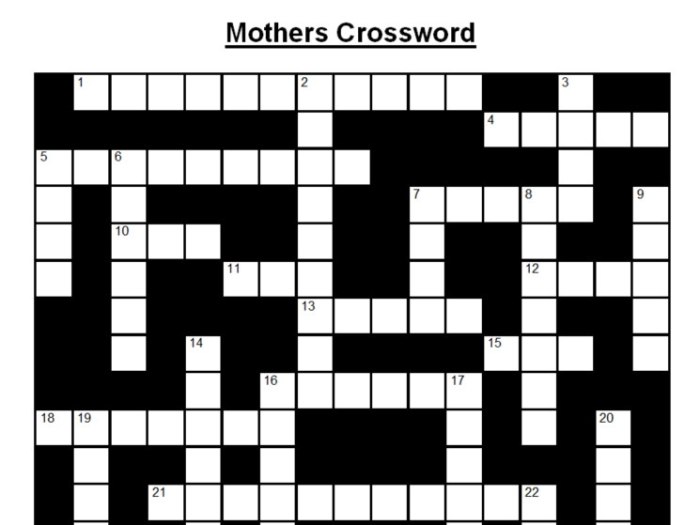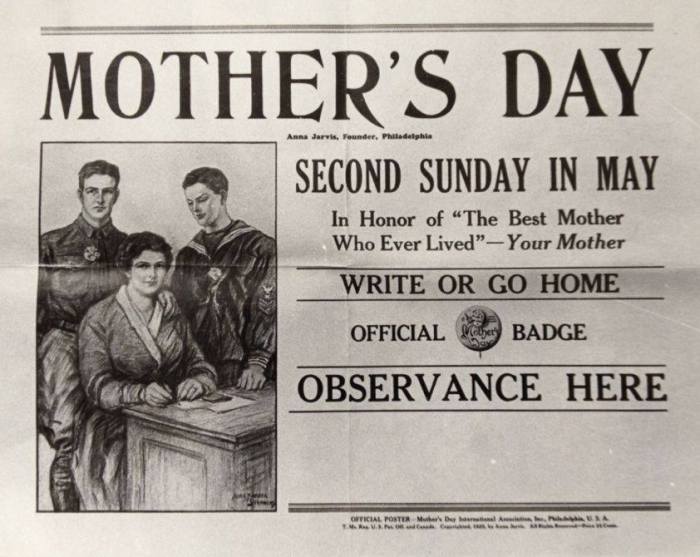Embarking on a journey through the National Congress of Mothers Crossword, we delve into the annals of history to uncover the genesis, endeavors, and enduring legacy of this influential organization that shaped the landscape of parenting and child welfare.
Founded in 1897, the National Congress of Mothers emerged as a beacon of progressive ideals, advocating for the well-being of children and families. This article delves into the organization’s mission, key figures, programs, advocacy efforts, and lasting impact on society.
National Congress of Mothers: Historical Context: National Congress Of Mothers Crossword

The National Congress of Mothers (NCM) was established in 1897 by a group of prominent women led by Alice McLellan Birney. The organization’s mission was to promote the well-being of children and families through education, advocacy, and community engagement.
The NCM played a pivotal role in the early 20th century, advocating for child labor laws, public health measures, and educational reforms. It also established a network of local chapters that provided support and resources to families.
Key Figures and Leaders, National congress of mothers crossword
Alice McLellan Birney:Founder and first president of the NCM. She was a prominent advocate for child welfare and education.
Florence Kelley:A leading labor reformer who played a key role in the NCM’s advocacy for child labor laws.
Julia Lathrop:A social worker and public health advocate who served as the NCM’s first vice president.
The NCM was primarily led by women, reflecting the organization’s focus on the role of mothers in child welfare.
Programs and Initiatives
The NCM launched a wide range of programs and initiatives, including:
- Child Labor Committee:Advocated for the abolition of child labor and the establishment of minimum age requirements.
- Public Health Committee:Promoted public health measures, such as clean water and sanitation, to improve child health.
- Education Committee:Advocated for educational reforms, including the establishment of kindergartens and vocational training programs.
These programs had a significant impact on the lives of children and families in the United States.
Advocacy and Reform
The NCM was a powerful advocate for child welfare and social reform. It played a key role in the passage of the first federal child labor law in 1916 and the establishment of the Children’s Bureau in 1912.
The organization also advocated for improved housing, nutrition, and medical care for children.
Legacy and Impact
The National Congress of Mothers left a lasting legacy in the field of child welfare. Its advocacy efforts helped to improve the lives of countless children and families.
The organization also played a key role in the development of the field of parenting and education. Its programs and initiatives continue to inspire and inform child welfare professionals today.
Essential Questionnaire
What was the primary mission of the National Congress of Mothers?
The National Congress of Mothers was dedicated to promoting the welfare of children and families, advocating for policies and programs that supported their health, education, and well-being.
Who were some of the key figures involved in the founding and leadership of the National Congress of Mothers?
Notable figures included Alice McLellan Birney, Phoebe Apperson Hearst, and Florence Kelley, who played instrumental roles in shaping the organization’s mission and programs.
What were some of the major programs and initiatives launched by the National Congress of Mothers?
The organization implemented various programs, including the establishment of kindergartens, playgrounds, and child welfare clinics, to address the needs of children and families.


